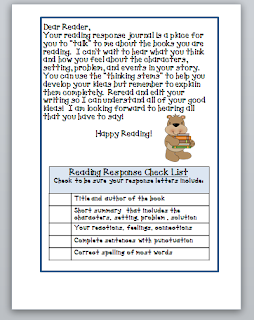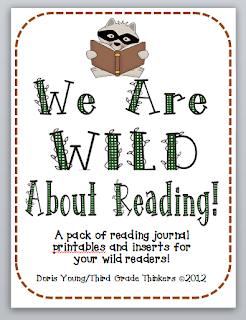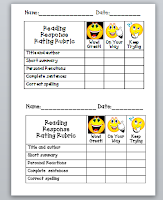Hee-Hee! A little reading humor may be a good way to start this post!
I think most reading researchers are in agreement that independent reading time is an essential component in a balanced literacy program. The problem here is that with our schedules as tight as they are, we don't have minute to waste. Students MUST be making wise reading selections and MUST be reading for the duration. How can we help this process along?
I know many of us spend time reinforcing correct book collection with minilessons centered around How to Pick Good Fit Books.
I make students accountable for recording their book choice and reading level in a reading journal each day. This helps me to be sure they are all reading on their independent reading level and are not abandoning book after book. I want to see that they are developing their reading stamina and finishing books. If some are having trouble, I give them limited choice which means I put about 6-7 books out that I know are on their level and they may be interested in and they choose from those.
Here is the Book Nook chart that I use in my classroom. Students' names are drawn randomly and clipped to a special reading spot. Students stay "eligible" for a book nook by using their reading time wisely and doing "real reading".
So how do we know students are really reading, really thinking? This is where their reading journal responses give me insight into their thoughts. Students are assigned to write me a reading response letter once a week. This gives me valuable information as to whether or not they are reading for meaning. Here is the letter that they will glue inside their reading journal. On the next page, they have thinking stems that help them to develop their thoughts about books. I think the trick here is to do some whole group shared writing of responses so students get the idea of what they should include. Then they will be more successful in writing them independently.
Once all my students are settled and reading, it is time for me to make "my rounds". Like a doctor working on making his way through to all his patients, I visit various students, doing check ups on how they are reading and prescribing strategies that may help them develop further as readers. I record information about my visits with students in my own reading notebook.
I am the queen of the sticky notes and prewrite names on the students I want to see for the day and make sure they have been seen and marked on before the end of the week. Nothing fancy, no elaborate spreadsheet, but it works for me. Listening to and talking with my readers gives me extremely valuable information..data from a reading test or comprehension worksheet just doesn't compare to what these miniconferences tell me about my readers.
After posting the math journal inserts, I had many requests to share the other journal ideas and printables I use. I reworked some of the reading ones and have bundled them. I've also included print outs for those who would like to make a BOOK NOOK poster for your classroom.
You can grab copies to download by clicking here:
Now I would love to hear what you have to say about independent reading time.
Email me with your comments or thoughts:















 youngdor8@gmail.com
youngdor8@gmail.com



















